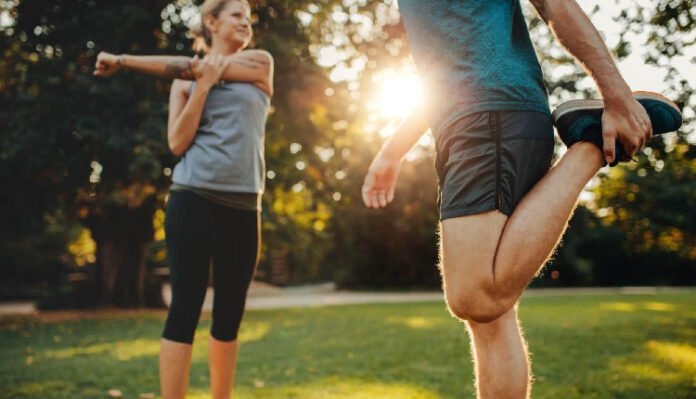Stretches benefit your body more than you realise, and we say this since many people still do not stretch before beginning a workout.
It should be a part of everyone’s training routine for a variety of reasons. This post is designed for you if you always begin your training regimen without stretching first. Keep reading if you don’t want to go on!
Here’s why you should do stretches before a workout (And after):
It prepares your body for the workout
Before a workout, do some dynamic stretching to loosen up your muscles, ligaments, tendons, joint capsules, and other tissues. The pre-workout movement effectively raises central body temperature and generates enhanced blood flow in the body, ensuring that your tissues receive appropriate oxygen.
However, stretching after an exercise allows you to properly cool your body down and prevents muscle tension and soreness.
It boosts your workout routine
As pre-workout stretches also prepare your body for activity, it will allow you to safely attain your target workout intensity faster. This is because you will be able to begin a workout already warmed up and prepared to go.
This tailored stretches routine which targets your physical imbalances and tightness can help you increase your strength and flexibility. When combined with strength training and aerobic conditioning, you should end up working out more efficiently and with more endurance, power, and agility.
You are less likely to get hurt
Recent research suggests that stretches could minimise the chance of muscle soreness, ligament twists, joint issues, and other painful sports and athletic problems. However, stretching is not the only thing you can do to keep yourself from getting wounded. Maintaining an appropriate form is also essential for staying safe throughout workouts.
It helps reduce stress and eases other mental illness issues
Do you have a higher level of stress than usual? Stretching on a daily basis, especially in combination with deep breathing and meditation exercises, is an excellent approach to relieve stress and tension and even reduce the signs of mental illness as well as anxiety. The advantage of stretches for stress relief is that you can do it at any hour of the day, even if you aren’t exercising. Try to stretch first thing in the morning before you begin your day and watch what a difference that makes.
It can help increase blood flow
Stretching on a daily basis may help your circulation. Improved circulation boosts blood flow to the muscles, which can minimise muscle tension and speed up the healing process (also known as delayed onset muscle soreness or DOMS).
It can help with back pain-related issues
Muscle tightness can cause a reduction in joint movement. Whenever this happens, you improve your chances of hurting your back muscles. Stretching the muscles can help repair an underlying back issue. Stretching on a regular basis could also help avoid future back pain by developing your back muscles and lowering your chance of strained muscle.
It could help improve your posture
Muscular imbalances are frequent and can contribute to bad posture. According to one study Published, a combination of exercising and stretching different muscle groups can help alleviate joint pain and promote appropriate alignment. As a result, your posture might improve.
Here’s a basic stretching routine you can follow if you’re a beginner:
If you’re new to stretching on a regular basis, start slowly. Your body, like any other sort of physical activity, takes time to adjust to the stretches you’re doing. You must also understand good form and practice. Otherwise, you risk injuring yourself. You can stretch at any time of day. For exercise days:
* Before your exercise, strive for 5 to 10 minutes of dynamic stretching
* After your workout, do 5 to 10 minutes of static or PNF stretching
Even on days when you don’t exercise, set aside at least 5 to 10 minutes for stretching. This can help with mobility as well as muscle tension and soreness.
While stretching, concentrate just on primary muscle groups that aid in movements, such as your calves, quadriceps, hip flexors, and thighs. Stretch the shoulders, neck, and lower back for some upper-body comfort.


